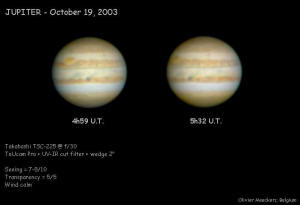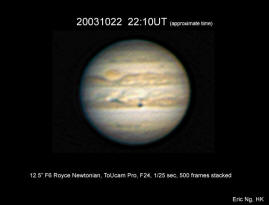|

by Michael E. Salla, Ph.D
Kona, Hawaii
08/16/07
from
Exopolitics Website
A paper titled "The
Lucifer Project" has recently emerged which claims that
NASA is very likely to deliberately direct the Cassini space
probe into Saturn's dense atmosphere where it will destruct. This is
to take place soon after the termination of Cassini's four year
monitoring mission in June 2008 when Cassini is in a polar orbit of
Saturn.
The paper's author contends this will be
a secret effort to use the Cassini's plutonium fuel rods as a
fission device to generate a runaway nuclear fusion process on
Saturn that would trigger the emergence of a new sun. The new sun
would enable the moons of Saturn to be heated possibly making them
suitable for colonization and other uses by humanity. On the other
hand, the creation of a new sun would generate a shock wave of
hydrogen and other particles that could have devastating effects on
Earth.
In order to fully evaluate the radical
views presented in "The Lucifer Project" it is best to begin with
Richard Hoagland's analysis of the Galileo
space probe's controlled descent into Jupiter's
equatorial region in 2003 where it was destroyed in a similar manner
to what is projected for Cassini.
Hoagland argues that the appearance of a dark splotch a month after
Galileo's descent on September 21, 2003 is circumstantial evidence
for a far reaching theory proposed by a Dutch engineer, Jacco Van
der Worp, that Galileo's plutonium power rods would implode due
to the high pressures deep inside Jupiter's atmosphere. The
implosion would create a highly efficient fission bomb that could
trigger a runaway fusion effect that would ignite Jupiter into a new
sun. In his original article, Van der Worp predicted ('Could
NASA Use Galileo to Create a Jovian Nagasaki?')
that the hydrogen particles accompanying the initial blast from an
ignited Jupiter would cause a catastrophic series of events on Earth
that might qualify as an extinction level event.
Hoagland's analysis of Van der Worp's thesis is quite thorough and
he gives a good explanation for why it is feasible. Hoagland dealt
with many of the scientific criticisms against Van der Worp's thesis
and found they did not rule out the scenario predicted by Van der
Worp. While the plutonium isotope (Pu-238) used to power the Galileo
is not the same isotope used in making atomic bombs (Pu-239), the
intense pressures in Jupiter's atmosphere and the spontaneous
creation of (Pu-239) as Galileo used its Pu-238 over the 15 years
since its launch in 1989, made it possible for a fission reaction to
occur.
Hoagland also describes a plausible reason for why there was a time
lag between the descent of Galileo on September 21, 2003 and the
initial observation of the blotchy dark spot on Jupiter on October
19, 2003 by the astronomer Olivier Meeckers. ('Mystery
Spot on Jupiter Baffles Astronomers')
 
Basically, after the destruction of most
of the Galileo probe through burning up in the atmosphere, the high
temperature resistant protective casing of the plutonium fuel rods
would survive and continue to descend.
Eventually, due to the thick atmosphere,
the surviving plutonium rods would reach a terminal velocity of one
mile per hour which would require close to a month for them to reach
the critical depth upon which the atmospheric pressure would cause
the plutonium rods to implode thereby generating a nuclear fission
reaction.
If Van der Worp and Hoagland
are correct, Galileo's plutonium rods created a powerful fission
device whose detonation dwarfed the Hiroshima bomb thereby causing
the dark splotch on Jupiter observed by astronomers. Fortunately,
the fission bomb did not cause a runaway nuclear fusion process that
would have led to Jupiter becoming a new sun, and would have caused
unimaginable catastrophic effects on Earth.
Van der Worp considered the controlled descent of Galileo to be an
unnecessary risk on the part of NASA and an independent scientific
board that did not properly consider the potential effects of
triggering a runaway fusion process on Jupiter. NASA's decision to
dispose of Galileo by sending it to Jupiter was confirmed by an
independent science board in 2002 ('On
Scientific Assessment of Options for the Disposal of the Galileo
Spacecraft'). What Van der Worp did not consider was that
a runaway nuclear fusion effect was in fact secretly planned by
those ultimately responsible for the decision to direct Galileo into
Jupiter.
Such a possibility was briefly mentioned by Hoagland at the
conclusion of his paper who referred to the scenario in Arthur C.
Clark's 2010 where Jupiter is ignited by a mysterious monolith into
a new sun. The plan to create a new star in our solar system through
artificial means has been termed the "Lucifer Project" since Clark
called the new companion star Lucifer ('Lucifer
- Our Companion Sun...').
The Lucifer Project was first publicly
mentioned by
William Cooper in his 1991 book,
Behold a Pale Horse
(p. 72). Cooper stated that at the end of its mission, the Galileo
probe would be sent into a controlled descent into Jupiter whereby
its plutonium fuel rods would implode to create a fission bomb that
would trigger the emergence of a new sun, Lucifer. The new sun would
warm up the nearby moons of Jupiter possibly making them habitable
for space colonization.
Cooper claims he witnessed documentation
for Project Lucifer back in the early 1970's when working on the
intelligence briefing team for the Commander of the Pacific Fleet.
What makes Cooper's 1991 claim astonishing is that at the time of
its 1989 launch and subsequently, NASA was claiming that other
options than a Jupiter hit were possible such as allowing Galileo
fly off into deep space ('Nuclear
Reaction When Galileo Spacecraft Impacts Into Jupiter In September
2003 Unlikely But Possible').
The circumstantial evidence pointed out by Hoagland suggests that
the only destructive effect of the Galileo probe's descent was a
large dark blotch the size of earth, perhaps the legacy of a failed
effort to cause a runaway fusion process through a nuclear fission
bomb. The evidence gives credence to Cooper's 1991 prediction and
suggests that the Lucifer Project was real though ultimately
unsuccessfully implemented at the end of the Galileo mission.
The recent paper mentioned earlier, "The
Lucifer Project", discusses what appears to be either a
new act of "unnecessary risk" taking on the part of NASA or a
new
attempt to implement the Lucifer Project. The anonymous author
claims that NASA will target the Cassini probe into Saturn at the
termination of its four year monitoring mission in June 2008. While
NASA has not yet announced that it will destroy Cassini by sending
it into Saturn, it is very highly likely that the same factors that
led to Galileo being destroyed in Jupiter's atmosphere, will dictate
that Cassini will be sent to Saturn for its eventual destruction.
These factors revolve around the
potential contamination of life bearing moons such as Titan if the
Cassini mission were prolonged and the spacecraft were to
malfunction while orbiting the Saturnian system. In a highly
significant paper that created a powerful precedent for the
environmental risks to future habitable planets or moons, a National
Research Council committee in 2000 recommended that all efforts must
be made to avoid possible contamination to
Europa or Io by the
Galileo space probe ('Galileo
Spacecraft to be crashed into Jupiter to Safeguard Europa and Io').
This precedent is very likely to be applied in a decision to avoid
any future risk to Titan by sending Cassini into Saturn's dense
atmosphere after completing its mission.
Like the earlier Galileo probe, Cassini has plutonium fuel rods
which upon implosion could create a powerful nuclear fission
detonation on Saturn. Due to the 72 lbs of plutonium on Cassini, 50%
more than the 48lbs on Galileo, and the less dense atmospheric
pressures on Saturn which has only 30% of Jupiter's mass, Saturn is
a better host for a runaway nuclear fusion process than Jupiter
according to the author of "The Lucifer Project". If Saturn were to
be ignited, it would create a gigantic pulse of hydrogen and other
particles as up to 10% of its mass was cast off, and would
eventually reach the Earth with possibly catastrophic consequences.
In conclusion, the potential for a runaway nuclear fusion process
that would ignite Saturn as a new sun, Lucifer, appears to be a
genuine concern. There is strong reason to believe that there was an
attempt in 2003 to ignite Jupiter as the circumstantial evidence
suggests. This attempt failed to do anything more than produce a
dark spot over an area the size of the Earth than has been observed
by astronomers. It may be that a new effort is underway using the Cassini mission as the cover for another attempt
to implement the
Project Lucifer.
The author of "Project Lucifer" is
alerting the public to such a possibility even though NASA has yet
to announce its plans after Cassini completes its mission. If
Cassini is targeted towards Saturn, any resulting catastrophic
series of events and the novelty of a new sun being created might
produce the right political and social circumstances for a
significant erosion of individual liberties.
The imposition of draconian national
security procedures to deal with unfolding events would dwarf in
proportion previous
false flag operations such as
9-11 which have
witnessed an undesirable increase in the influence of national
security organizations as a result of catastrophic events ('False Flag Operations, 9-11 and the
Exopolitical Perspective').
The general public is urged to familiarize themselves with the
issues concerning the possible terra-forming of Saturn's moons by an
artificially contrived nuclear fusion process on Saturn itself.
While there may be long term public benefit from terra-forming
Saturn's moons, such a policy needs to be publicly debated and not
secretly implemented given the dangers involved. Furthermore, all
information concerning Project Lucifer and the early unsuccessful
effort to ignite Jupiter by the use of Galileo as a nuclear device
needs to also be released to the public.
The potential for catastrophic events to
occur on Earth as a result of a successful effort to ignite Saturn
should not be lightly dismissed due to 10% of Saturn's mass possibly
being ejected in an initial blast.
It is highly recommended that public
pressure is applied on NASA officials not to approve the Cassini
mission being deliberated targeted at Saturn for self-destruction,
and that its mission is prolonged until a suitable way is found to
safely dispose of the craft and its dangerous plutonium fuel.
|


